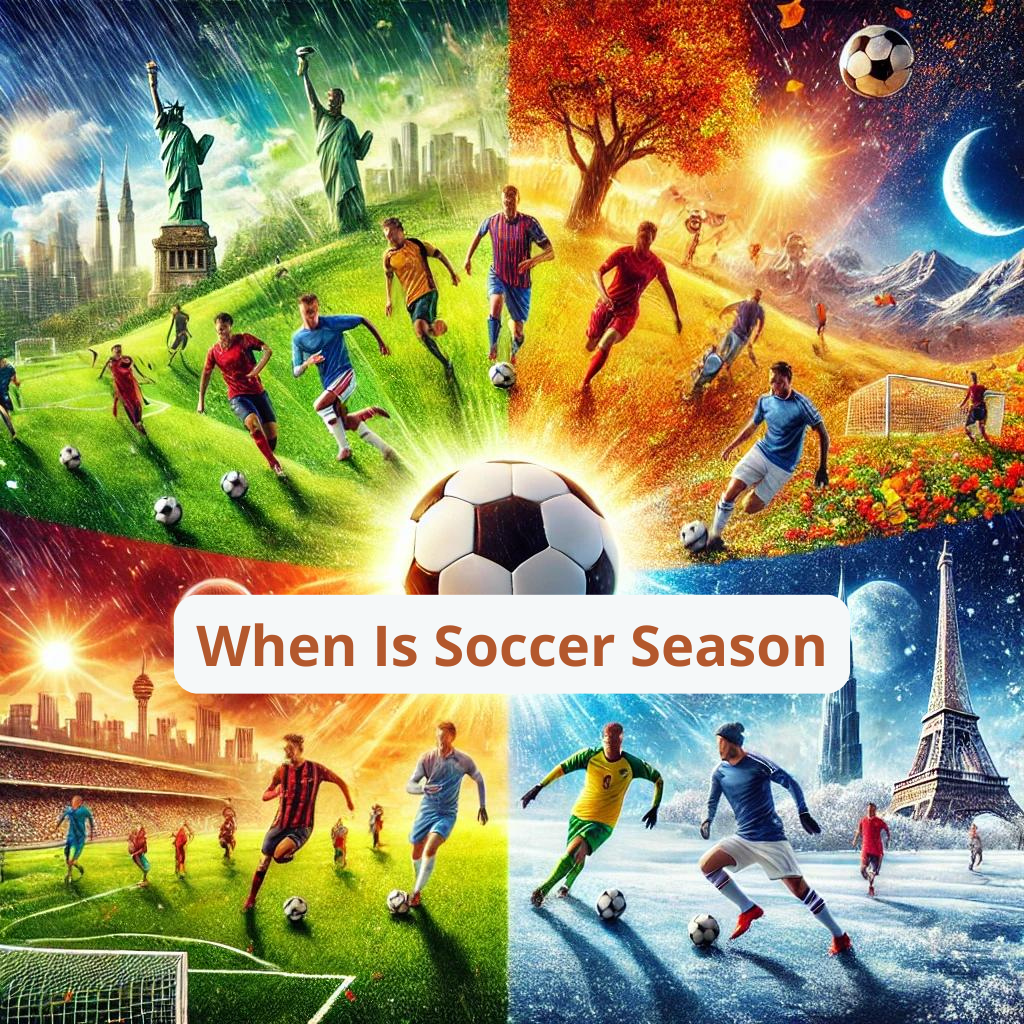Soccer, known as football in many parts of the world, is the globe’s most beloved sport, captivating millions with its thrilling matches and passionate fanbase. Whether you’re a seasoned supporter, a new enthusiast, or someone looking to join a local league, understanding when is soccer season is crucial.
This comprehensive guide explores the various soccer seasons across different regions, the factors influencing these schedules, and what to expect during and between seasons.
Major Soccer Leagues and Their Seasons
European Leagues
English Premier League (EPL)

- Season Duration: August to May
- Highlights: One of the most competitive leagues globally, featuring 20 teams battling for the title, European competition spots, and to avoid relegation.
La Liga (Spain)

- Season Duration: August to May
- Highlights: Home to world-renowned clubs like Real Madrid and Barcelona, emphasizing technical skill and tactical play.
Bundesliga (Germany)
- Season Duration: August to May
- Highlights: Known for high-scoring games and passionate fanbases, with 18 teams competing.
Serie A (Italy)

- Season Duration: August to May
- Highlights: Rich history with a focus on defensive strategies, featuring 20 teams.
Ligue 1 (France)

- Season Duration: August to May
- Highlights: Emerging talents and competitive teams, with 20 clubs vying for the championship.
Major League Soccer (MLS)

- Season Duration: Late February or early March to October, with playoffs extending into November or December.
- Highlights: The top professional soccer league in the United States and Canada, expanding rapidly with new teams and increasing popularity.
Click on the image below to find something comfy when you are off the field.
South American Leagues
Brasileirão Serie A (Brazil)
- Season Duration: May to December
- Highlights: Known for its flair and attacking play, featuring 20 teams competing in a double round-robin format.
Argentine Primera División (Argentina)
- Season Duration: Varies between calendar-year and split seasons
- Highlights: Intense rivalries and passionate supporters, with multiple titles contested annually.
Asian Leagues
J1 League (Japan)
- Season Duration: February or March to December
- Highlights: Competitive matches with a focus on technical skill and discipline, featuring 18 teams.
K League 1 (South Korea)
- Season Duration: March to November, with playoffs extending into December
- Highlights: High-paced games and emerging talents, consisting of 12 teams.
African and Oceanian Leagues
Egyptian Premier League (Egypt)
- Season Duration: October to July
- Highlights: One of Africa’s most competitive leagues, featuring clubs like Al Ahly and Zamalek.
A-League Men (Australia)
- Season Duration: October to May
- Highlights: The top professional league in Australia, known for its diverse talent and competitive balance.
Factors Influencing Soccer Seasons
Climate and Weather
Climate plays a pivotal role in determining the soccer season. In regions with extreme weather conditions, seasons are scheduled to avoid the harshest months. For example:
- Europe: The temperate climate allows for an August-to-May schedule, avoiding the hottest summer months.
- South America: Countries like Brazil opt for a May-to-December season to circumvent heavy rains and cooler winter months.
Historical and Cultural Factors
Tradition and cultural preferences significantly influence scheduling:
- Europe: Long-standing traditions and established calendars make it challenging to alter the season structure.
- MLS: Aligns more with North American sports schedules, starting in spring and ending in fall to avoid clashing with major American sports like the NFL and NBA.
International Competitions
International tournaments like the FIFA World Cup and continental championships affect domestic schedules:
- World Cup Years: Domestic leagues may adjust their calendars to accommodate international play.
- Club Competitions: Participation in UEFA Champions League or Copa Libertadores requires careful scheduling to balance domestic and international fixtures.
Off-Season Activities
The off-season is a critical period for player rest, transfers, and training:
- Transfers: Most player transfers occur during the off-season, allowing teams to rebuild and strategize for the upcoming season.
- Training Camps: Teams use this time for pre-season training to prepare physically and tactically.
- Rest and Recovery: Players recuperate from the previous season’s demands to prevent burnout and injuries.
Youth and Amateur Soccer Seasons
Youth and amateur leagues often have different schedules tailored to local climates and educational calendars:
- School Leagues: Typically align with the academic year, running from late summer to spring.
- Summer Leagues: Offer play during school vacations, ensuring participation without conflicting with academic responsibilities.
Global Variations and Overlapping Seasons
Soccer’s global nature means that seasons can overlap or differ significantly:
- Northern vs. Southern Hemisphere: Leagues in the Southern Hemisphere (e.g., MLS, Brasileirão) often have seasons opposite to those in the Northern Hemisphere (e.g., EPL, La Liga).
- International Players: Players participating in multiple leagues or international competitions must adapt to different schedules, often requiring extensive travel and time management.
Conclusion
Understanding when is soccer season is essential for fans, players, and stakeholders alike. With varying schedules across continents, influenced by climate, tradition, and international competitions, soccer operates on multiple calendars that cater to regional needs and preferences.
Whether following the intense matches of the European leagues, the growing excitement of MLS, or the passionate games in South America, knowing the soccer season helps you stay connected to the beautiful game.
Frequently Asked Questions (FAQ)
When is the MLS soccer season?
Major League Soccer (MLS) typically starts in late February or early March and runs through October, with playoffs continuing into November or December.
How do international tournaments affect soccer seasons?
International tournaments like the FIFA World Cup and continental championships can lead to adjustments in domestic league schedules to accommodate player participation and reduce fixture congestion.
When is the soccer off-season?
The off-season occurs after the conclusion of the regular season. In Europe, this is typically from May to August, while in MLS, it spans from October or November to February.
Do soccer seasons differ in the Southern Hemisphere?
Yes, leagues in the Southern Hemisphere, such as MLS in North America and Brasileirão in Brazil, often have seasons that run opposite to those in the Northern Hemisphere to align with local climates and traditions.
When do soccer teams make transfers?
Most soccer transfers occur during the off-season, allowing teams to rebuild and prepare for the upcoming season. Some transfers also take place during mid-season transfer windows.
Are there variations in soccer seasons globally?
Yes, soccer seasons vary globally based on regional climates, cultural traditions, and the structure of domestic leagues. This results in overlapping and differing schedules across continents.

